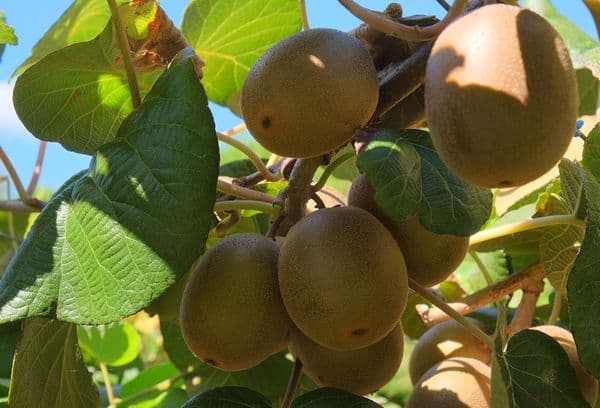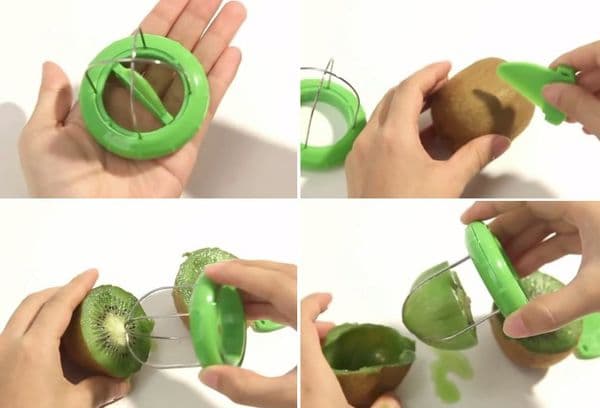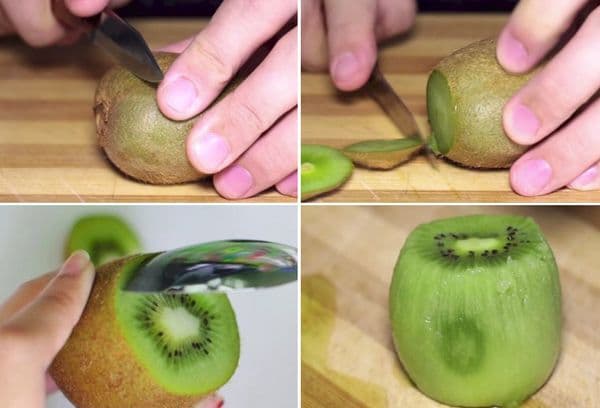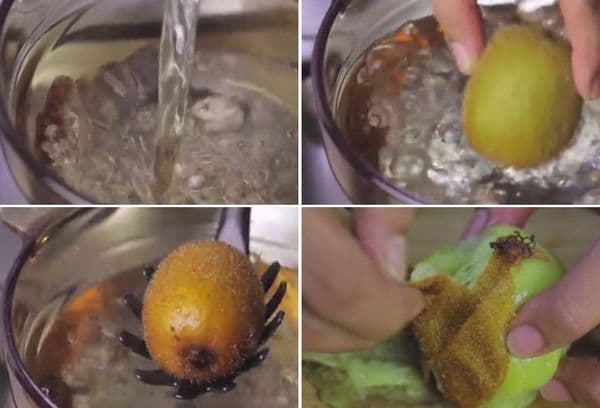Three ways to peel kiwi
Exotic kiwi has a very thin peel and juicy pulp, and when cleaning it is easy to cut off the excess and get your hands dirty with sticky juice. How to peel kiwi, and is it necessary to do it? There are several convenient ways; it is also possible to use it with the peel.
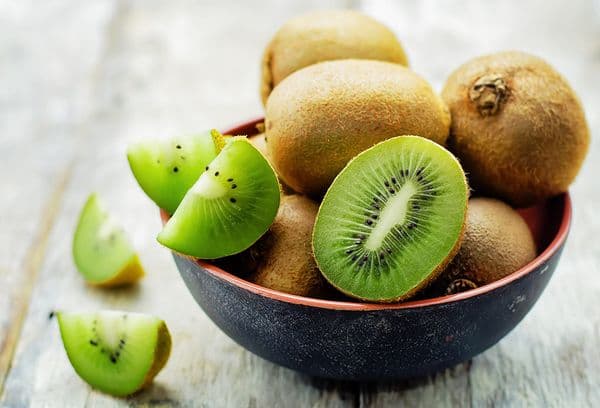
About purchasing, cleaning and storage
Very difficult to clean unripe kiwi. Choose fruits that are soft but have thick skin. A good fruit has a subtle fresh smell, there are no stains or cracks.
Unripe kiwi is tasteless, it is very sour and dense. When purchasing such a fruit, it is better to let it ripen. To do this, it is enough for him to lie for a couple of days in a paper bag with bananas, apples or pears.
Many people try to peel kiwis like potatoes. This is not very convenient, since you have to hold the pulp in your hands, and it is quite slippery. If the fruit does not fall out of the palm, it will thoroughly stain it. With this method, try not to deepen the blade too much so as not to cut off a lot of pulp. Alternatively, use a vegetable slicer.
At home, it is better to use a serrated knife to peel kiwi. There are ways to quickly peel kiwi without a knife.
It is best to peel the skin right before eating. The pulp will quickly disappear, especially if stored incorrectly. Fruits are placed in the refrigerator in containers or bags, as they easily absorb foreign odors.
gadget
Stores like Fix Price sell a mysterious design labeled as a “kiwi peeling knife.” This is a plastic circle with a slot.There are two wires on it, fixed dome-shaped and perpendicular to each other. A kind of cage or grille of a lantern made of four rods. A miniature saw is inserted into the cutout of the plastic base.
Procedure: release the saw and cut the fruit crosswise. Press the “rods” into the center of the fruit and turn - the wire will cut the pulp from the peel, and four neat pieces will fall out into the palm of your hand.
Spoon
This method allows you to avoid getting your hands dirty. You will need a wide tablespoon; it fits well. How to properly remove the peel in this way, instructions:
- First, cut off both ends of the kiwi with a knife.
- Place the fruit on a flat surface.
- Place the spoon under the peel with the concave side towards the pulp.
- Pull back the skin a little and begin to move the spoon in a circle.
- When the spoon returns to its original position, the skin will come off on its own.
- You can roll the kiwi with a spoon in your palm and place a dish under it. The pulp will fall out into the bowl.
Cooking
By boiling you can quickly get rid of the kiwi peel. This is convenient when you have to peel a lot of fruit at once.
An unusual way step by step:
- Pour enough water into the pan to cover the fruit later.
- Boil.
- Throw the kiwi into the pan and boil for no more than 30-40 seconds.
- Remove with a slotted spoon.
- Immerse the fruit in cold water to help it cool faster.
- The boiled skin can be easily removed by hand.
Attention
The method is in no way suitable for overripe kiwis: under the influence of boiling water, the pulp will simply boil into puree.
Magazine purity-en.htgetrid.com: offers quickly and simply enjoy kiwi by cutting the washed fruit in half and scooping out the pulp with a dessert spoon directly from the half.
Without cleaning - is that really how they eat?
If peeling the fruit only causes irritation, you can try eating it directly with the skin.It is edible and even healthy: it contains antioxidants, in particular vitamin E. The only negative is the unpleasant hairy structure, which can interfere with the perception of taste. Kiwi is washed and cut into slices, like an orange.
Advice
People with sensitive digestive tract mucosa are better off not eating the fruit with the peel.
Do not forget to thoroughly wash the peel with a brush or pour boiling water over it before use. The dense shell does not allow microbes to penetrate inside the fruit, but when it is removed, harmful microorganisms can enter there.
